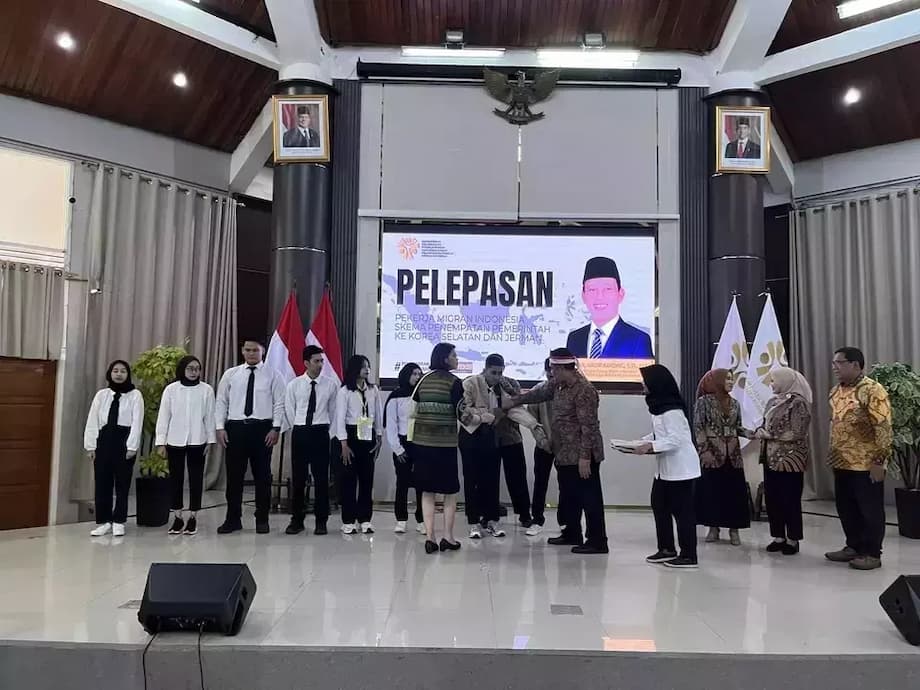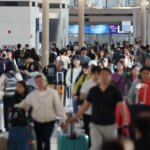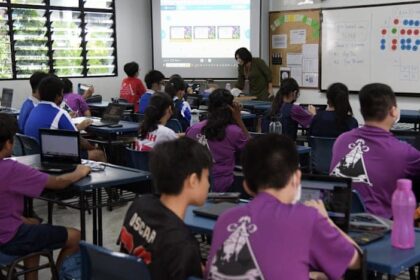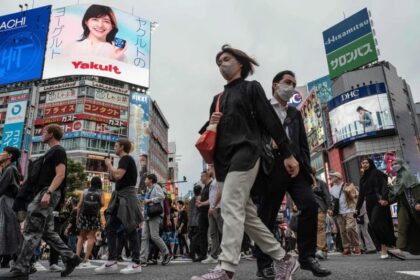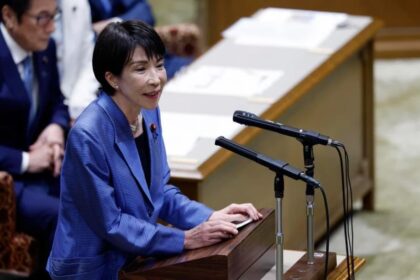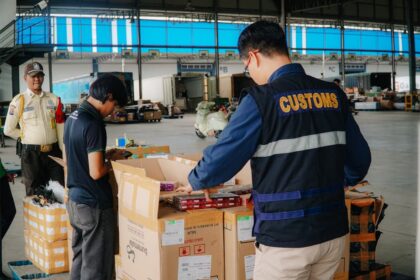Indonesia’s Overseas Worker Program: A New Era of Opportunity
Indonesia is embarking on an ambitious plan to send hundreds of thousands of its citizens abroad as migrant workers, offering the promise of salaries far higher than most can earn at home. In 2025, the government aims to deploy at least 425,000 workers to countries across Asia, Europe, and beyond, with some positions offering monthly wages up to Rp 50 million (about $3,000). This initiative is not only a response to persistent unemployment and limited job opportunities domestically but also a strategic move to boost the nation’s economic growth and foreign exchange reserves.
- Indonesia’s Overseas Worker Program: A New Era of Opportunity
- Where Are Indonesian Workers Going—and What Jobs Await?
- Economic Impact: Remittances and National Growth
- Challenges: Protection, Exploitation, and the Human Cost
- Building Skills and Financial Literacy: Preparing for Life After Migration
- Competition and the Road to Global Competitiveness
- In Summary
The program, spearheaded by the Ministry of Manpower and supported by President Prabowo Subianto, is designed to maximize Indonesia’s demographic dividend—a large, young workforce—while addressing the global demand for skilled and semi-skilled labor. The stakes are high: in 2024 alone, the deployment of 297,000 migrant workers generated Rp 251 trillion in foreign exchange and contributed to a 0.36 percent increase in economic growth. The 2025 target is even more ambitious, with projected foreign exchange earnings exceeding Rp 300 trillion and a potential 0.52 percent boost to GDP.
Where Are Indonesian Workers Going—and What Jobs Await?
Indonesia’s government-to-government (G-to-G) employment schemes have recently sent workers to South Korea, Germany, and other countries. In a recent batch, 191 workers were dispatched to South Korea for roles in manufacturing, fisheries, and services, while 11 were sent to Germany as nurses. These are just a fraction of the total, as millions of Indonesians already work abroad, primarily in Malaysia, Taiwan, Singapore, Saudi Arabia, and the Republic of Korea.
The jobs on offer vary widely:
- South Korea: Manufacturing, fisheries, and service sector jobs, with average monthly salaries around Rp 25 million.
- Germany: Nursing positions, offering Rp 40–50 million per month, reflecting the high demand for healthcare professionals in Europe.
- Other Destinations: Domestic work, construction, plantation, and care sectors remain common, especially in Asia and the Middle East.
Employment contracts typically last three years, with options for extension. For example, South Korean contracts can be extended by up to 22 months, while German contracts may be renewed if workers achieve professional recognition. The government is also working to expand the list of destination countries, particularly in Europe, to diversify opportunities and reduce reliance on traditional markets.
Preparation and Training: More Than Just a Job Offer
Securing a job abroad through official channels is a lengthy process, often taking up to two years. Prospective workers undergo rigorous technical skills training and intensive language courses to ensure they are ready for the demands of their new roles. The government is prioritizing English language education from elementary school onward, aiming to make Indonesian workers more competitive globally—especially against workers from countries like the Philippines, who are known for their language proficiency and professionalism.
Beyond technical skills, the program emphasizes mental readiness and adaptability. Officials stress that working overseas is not just about earning higher wages, but also about coping with new cultures, languages, and work environments. Many workers have resigned prematurely due to challenges abroad, highlighting the importance of psychological preparation and support.
Economic Impact: Remittances and National Growth
The economic benefits of Indonesia’s migrant worker program are substantial. Remittances—money sent home by workers abroad—are a vital source of income for millions of Indonesian families and a significant contributor to the national economy. In 2016, remittances from Indonesian migrant workers totaled more than IDR 118 trillion, and by 2018, this figure had risen to US$8.8 billion (IDR 127.6 trillion). Women contribute the majority of these remittances, reflecting their dominance in sectors like domestic work and care.
These inflows help reduce poverty, support local economies, and provide capital for small businesses and investments. The government sees the expansion of overseas employment as a key strategy for reducing unemployment, which stood at 7.47 million in 2024, and for driving economic growth. Community job training centers and entrepreneurial incubators are being developed nationwide to prepare workers for both overseas and domestic opportunities.
Comparing Indonesia’s Approach to Global Guest Worker Programs
Indonesia’s strategy is part of a broader global trend, where countries with labor surpluses send workers to richer neighbors facing labor shortages. Programs like the US H-2A, Australia’s PALM, and Canada’s SAWP provide frameworks for seasonal and long-term labor migration, often with higher-than-minimum wages and varying degrees of worker protection. Indonesia’s focus on skill certification, language training, and legal migration channels aims to position its workers competitively in this international landscape.
Challenges: Protection, Exploitation, and the Human Cost
Despite the economic promise, Indonesian migrant workers face significant risks and challenges. Reports of contract substitution, lack of legal protection, abuse, and exploitation are common, especially among low-skilled workers in domestic and care sectors. Many problems begin at home, with labor brokers and recruitment agencies sometimes providing misleading information about wages and working conditions, or charging excessive fees.
The Indonesian government has taken steps to address these issues, including:
- Regulating recruitment agencies and introducing digital platforms like SISKOP2MI to safeguard workers’ rights
- Providing pre-departure training, legal aid, and insurance schemes (though access and understanding remain limited for many workers)
- Establishing bilateral agreements with destination countries to ensure better wages, health, social, and life insurance
However, enforcement remains a challenge. Many workers still migrate through unprocedural or illegal channels, exposing them to greater risks of exploitation, unpaid wages, and even trafficking. The COVID-19 pandemic further complicated matters, leading to repatriations, uncertainty, and increased cases of fraud and unpaid salaries.
Gender and Vulnerability: The Case of Women Migrant Workers
Women make up the majority of Indonesian migrant workers, particularly in domestic and care sectors. They are especially vulnerable to violence, fraud, debt bondage, and other abuses. Initiatives like the Integrated Gender Responsive Migrant Workers Resource Centre (MRC) in Cirebon, West Java, provide essential support, including pre-employment consultation, psycho-social counseling, legal aid, and authoritative information. These centers also help draft village regulations to protect workers and promote legal migration.
Susilawati, a former undocumented worker, shared her experience after joining MRC training: “I learned about legal recruitment, workers’ rights, and financial management. Now, I am preparing to work in Hong Kong through proper procedures and aim to invest for my future. I also educate others in my village about the risks of illegal migration.”
Such programs are seen as models for good governance, involving multiple stakeholders at the village level and focusing on early intervention, literacy, and economic empowerment.
Building Skills and Financial Literacy: Preparing for Life After Migration
Preparation for overseas work now goes beyond technical and language skills. The government and NGOs are increasingly focused on financial literacy, helping workers manage their earnings, save for the future, and avoid common pitfalls like debt and poor investment decisions. At training centers, workers learn about budgeting for children’s education, old age, home ownership, and starting businesses. This holistic approach aims to ensure that the benefits of migration are long-lasting and contribute to sustainable development at home.
Legal Protections and the Need for Reform
While Indonesia has made progress in protecting its citizens abroad, gaps remain. Legal disputes involving migrant workers are often slow to resolve, and judicial systems may favor employers. Insurance schemes and compensation programs exist but are sometimes inaccessible or poorly explained. The government has ratified international conventions and updated laws, but effective enforcement and coordination across agencies are still needed.
Experts and advocates call for further reforms, such as simplifying insurance claims, integrating immigration and labor laws, and providing better support systems for workers facing disputes or abuse. The goal is to ensure that migration is not only a path to higher income but also a safe and dignified experience for all Indonesians.
Competition and the Road to Global Competitiveness
Indonesia faces stiff competition from other labor-sending countries, particularly the Philippines, whose workers are renowned for their skills and English proficiency. Filipino workers remit $40 billion annually, far surpassing Indonesia’s figures, despite a smaller overseas workforce. To close this gap, Indonesia is investing in education, skill certification, and language training, aiming to produce a new generation of globally competitive workers who can command higher wages and better working conditions.
There is also a push to overcome stereotypes that Indonesian migrant workers are only suited for low-skilled jobs. The government is prioritizing the deployment of skilled workers and expanding opportunities in sectors like healthcare, technology, and engineering. This shift could not only increase remittances but also enhance Indonesia’s reputation as a source of talent in the global labor market.
In Summary
- Indonesia plans to send 425,000 workers abroad in 2025, targeting high salaries and economic growth.
- Workers are being deployed to countries like South Korea and Germany, with monthly wages up to Rp 50 million.
- The program includes rigorous training, language education, and a focus on mental readiness and adaptability.
- Remittances from migrant workers are a major source of income for families and the national economy.
- Challenges remain, including exploitation, legal protection gaps, and the risks of illegal migration.
- Women make up the majority of migrant workers and face unique vulnerabilities, prompting gender-responsive support programs.
- The government is investing in skills, financial literacy, and legal reforms to enhance worker protection and competitiveness.
- Indonesia aims to match or surpass regional competitors like the Philippines in remittance generation and global labor market presence.


